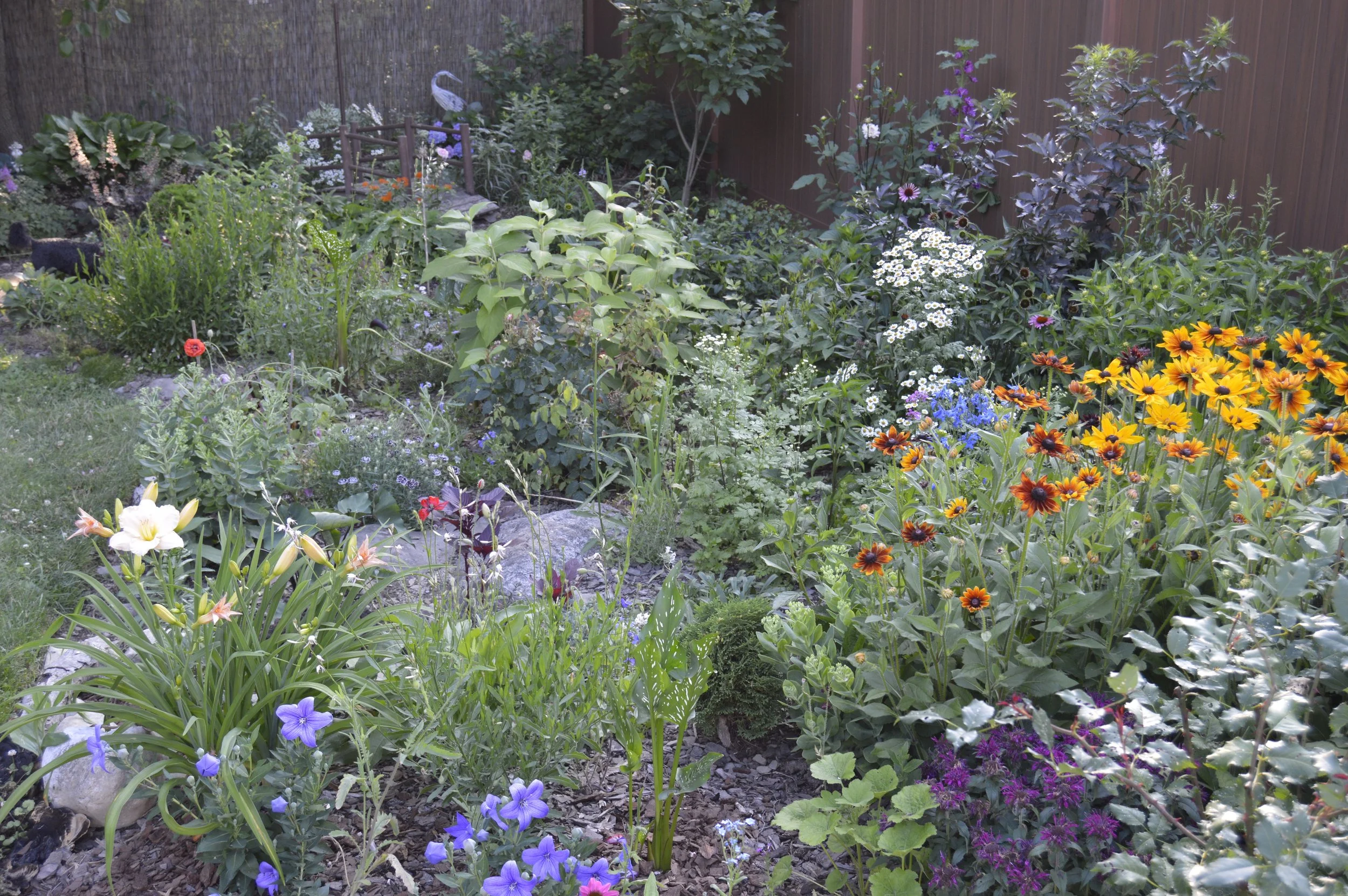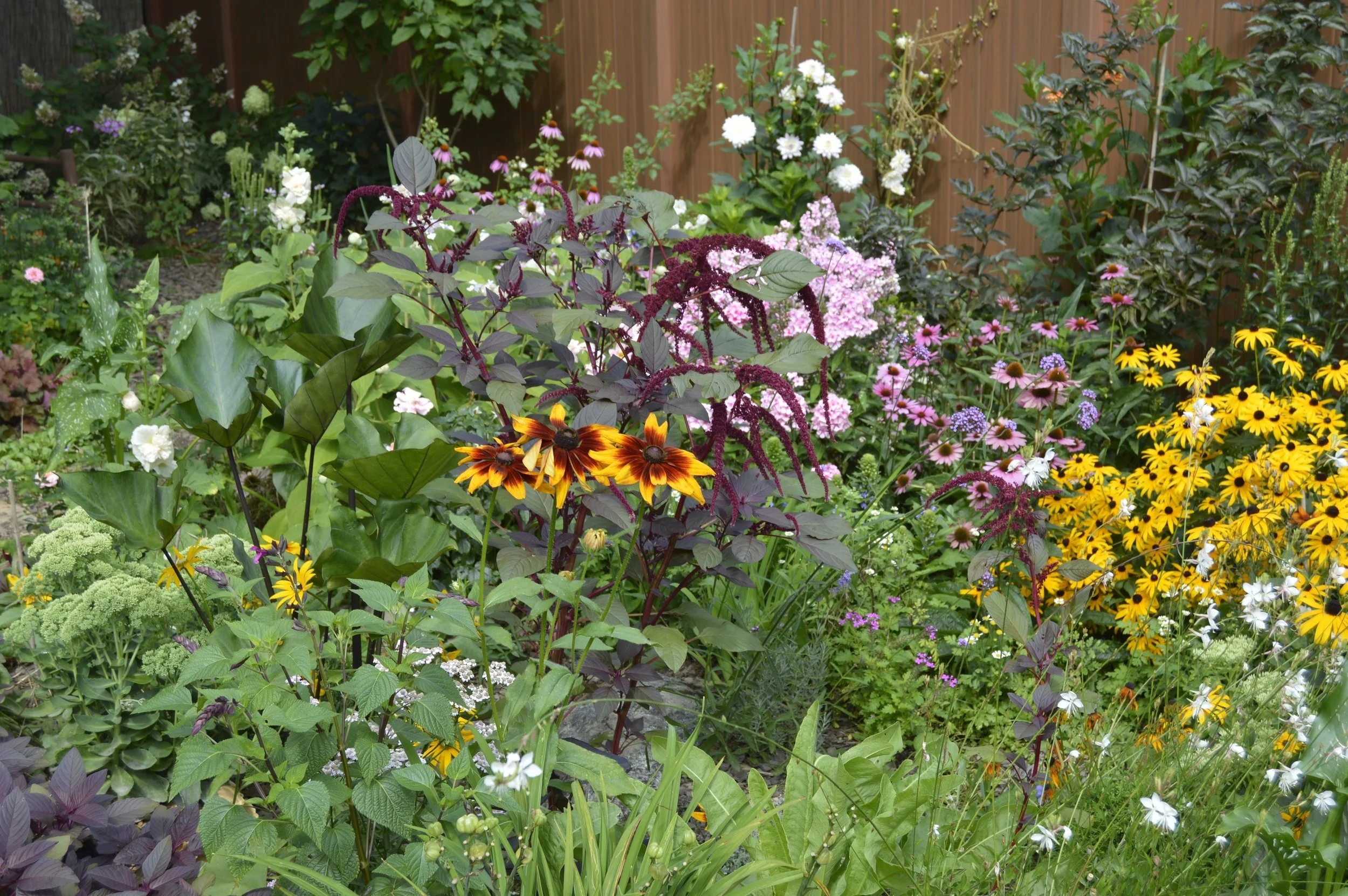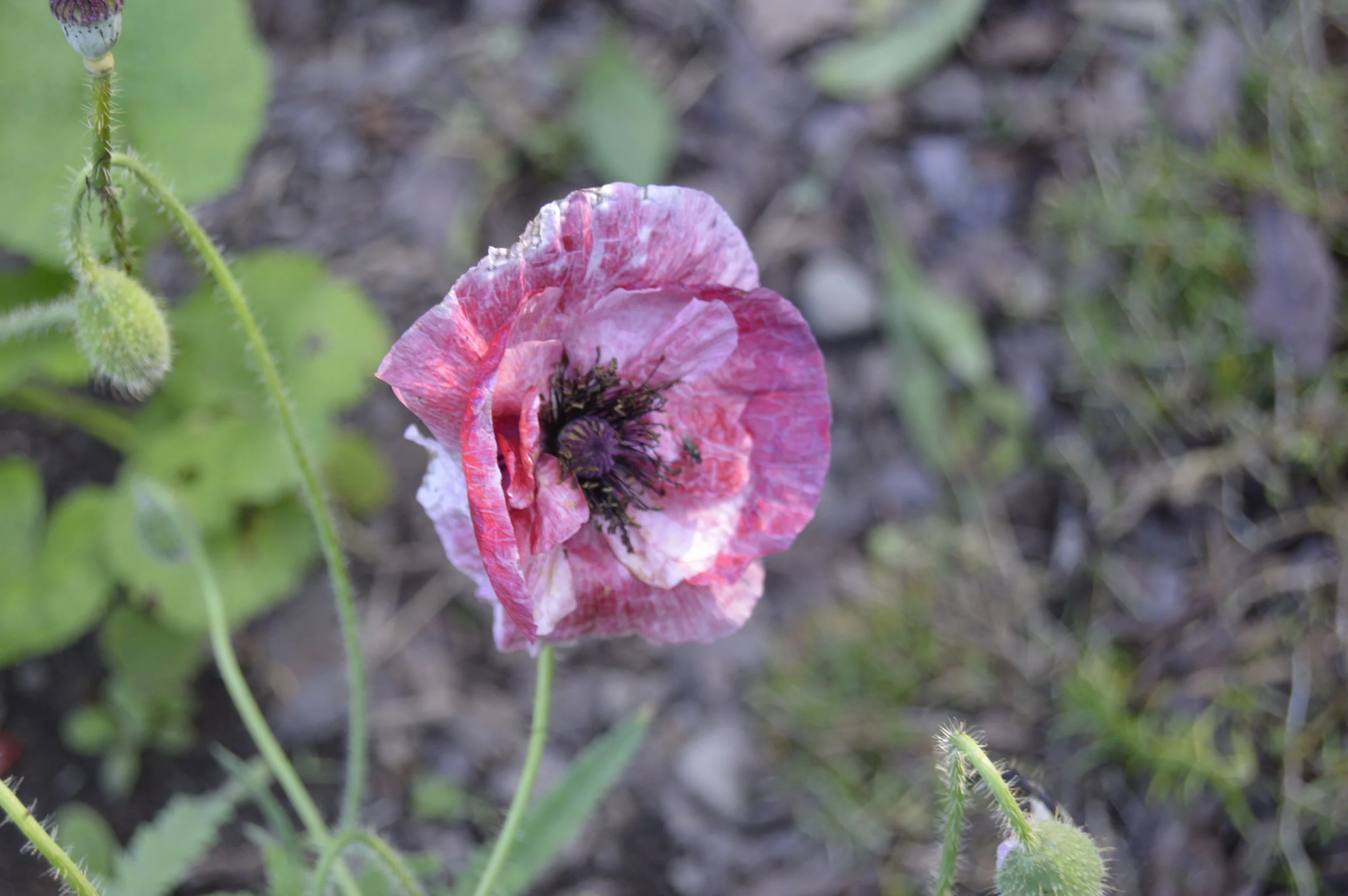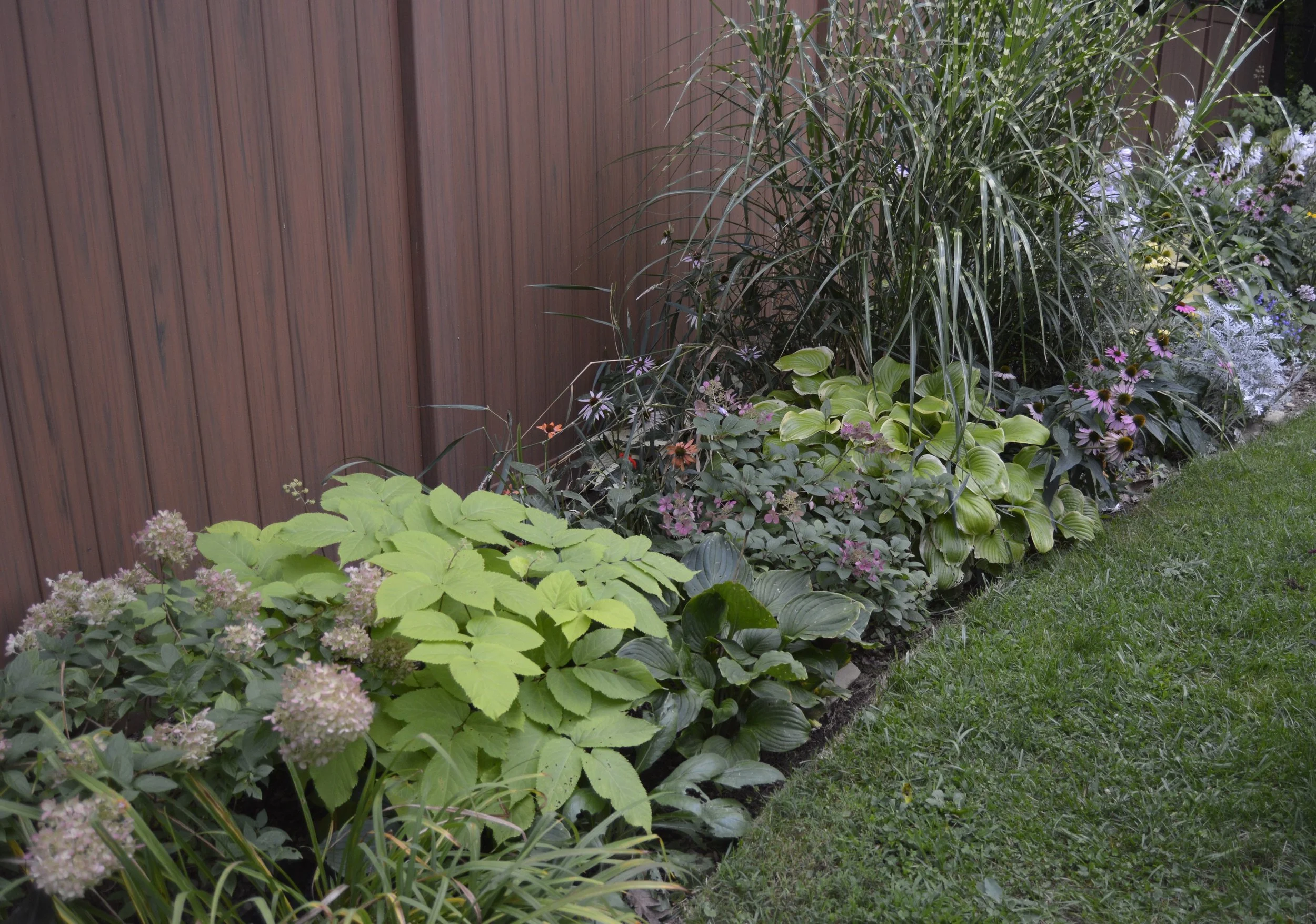The Ultimate Guide to a Lush Garden Oasis
A full looking garden takes time. While it is not something you can accomplish overnight, you do not have to wait three years, which is how long it takes for most perennials to reach their full potential. Here are some hacks to get you that lush garden look sooner.
Plant From Seed
Repetition creates cohesion in a garden, which allows the eye to rest. This makes for an aesthetically pleasing space. To keep this affordable you may want to plant some things from seed. It is an affordable way to fill in a space and make a big impact. Many of the plants here have been planted from seed, such as: Cherokee Sunset Rudbeckia, Perennial Lupine, Gaura, Balloon flower, and Hollyhocks.
Let Plants Self-Sow
Not that you want the garden to get weedy and overtaken by thugs, but there are some plants that I welcome to spread their progeny. Some of the self-seeders in this picture are: Feverfew, Rudbeckia, Hollyhock, and Amaranth.
The way to benefit from these bonus plants is to not be in a hurry to weed and put new mulch down for the season, especially before you are familiar with the appearance of the seedlings you would like to keep.
I am quite a late mulcher. I find that if I wait long enough, the garden fills in so much that I need a lot less mulch than I thought I would. That’s a great problem.
Plant Annuals
Poppy
I do this one naturally since I end up with more seedlings than I know what to do with every spring. Somehow every winter I keep ordering more and more seeds. I have given up telling myself not to do that next year. It’s a compulsion I’ve decided is not worth fighting. Whatever gets us through the winter, right?
You can also buy 6 packs of annuals at your local garden center instead of growing from seed. I like to do a combination.
Ignore spacing requirements!
There is always room for that interesting plant you picked up on a whim at the grocery store. Just stick it in between those young little ninebarks you bought on clearance last fall. They’ll need some time to fill out anyway.
Inoculate Your Soil
Worm Castings
Life in the soil is important. Plants need the help of beneficial fungi and bacteria to cope with drought, disease, and to access nutrients from further away that their roots can reach. You can do this by adding organic matter such as compost, worm castings, shredded leaves, grass clippings…etc. After a couple of years of doing this your soil should be full of worms as well as micro-organisms.
Water Newer Plants
Maintaining your garden's aesthetics requires caring for stressed plants, especially newly planted or recently relocated ones. Offer them a drink when you observe signs of stress, especially in times of drought. They will thank you for it, not right away, but by the next morning.
Plant Drought Tolerant Plants
Most of my garden is drought tolerant. This helps give me the time to water the few things that are not. As it so happens, the plants I love most just happen to be tough. Examples include Roses, Rudbeckia, Echinacea, Yarrow, Ninebarks, Willows, Lavender, Salvia…this list could go on and on. These are the backbone of the garden.
The journey to enhancing your garden's aesthetics is a rewarding one! Try these tips, and you will not only create a visually stunning garden, but also contribute to its long-term sustainability and growth. Happy gardening!






